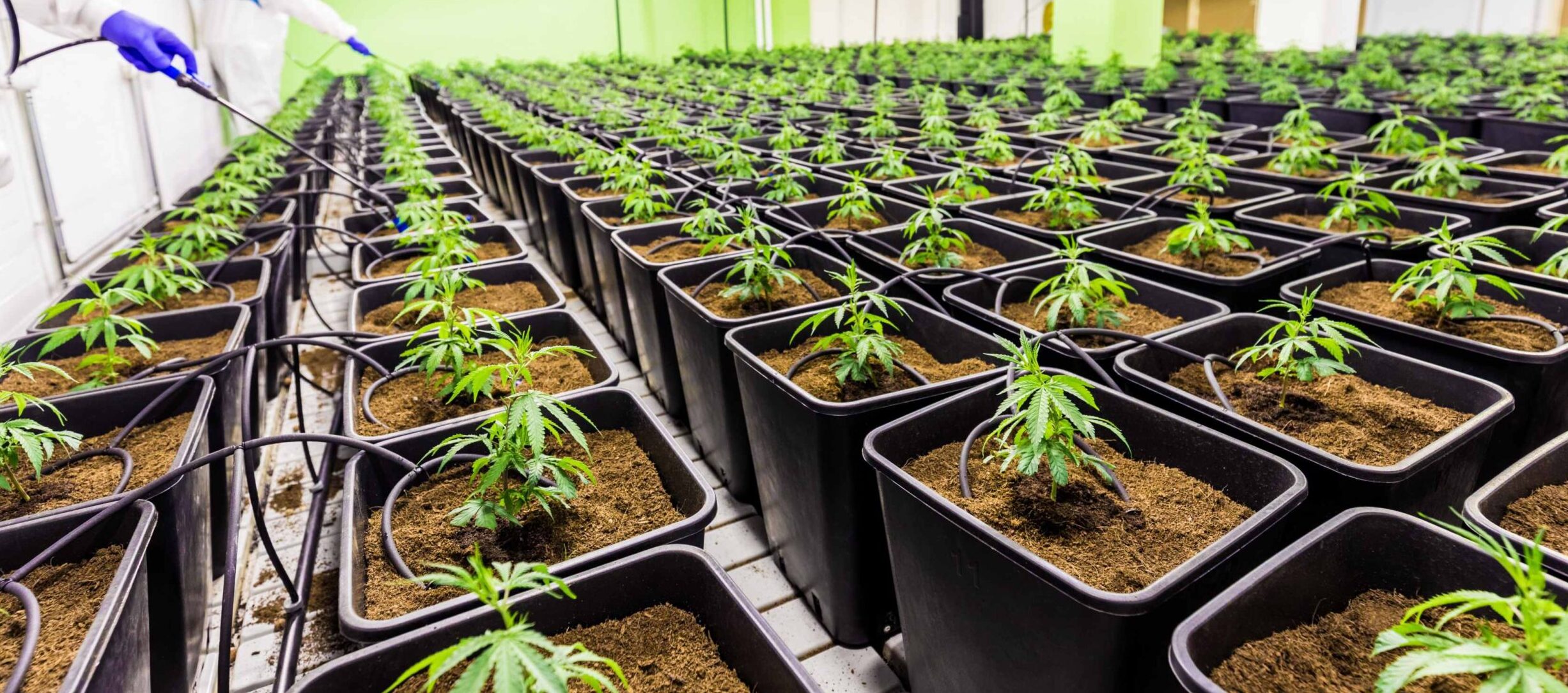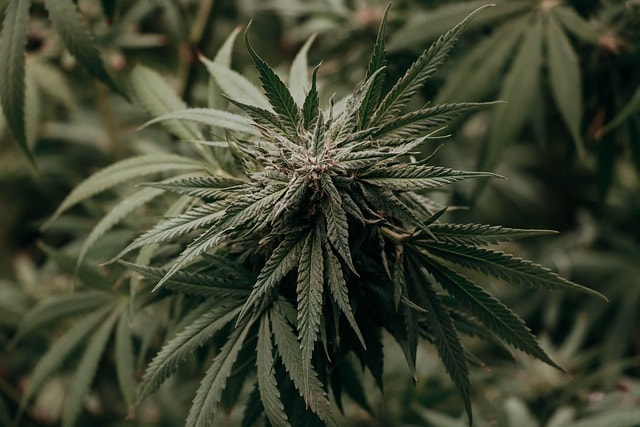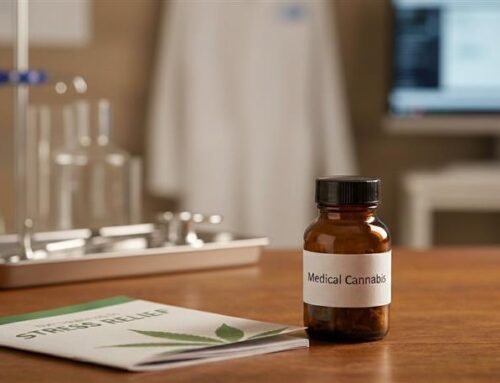Looking to growing weed at home? This guide will walk you through each step. From the cannabis plant life cycle and setting up your grow space to understanding legal requirements, handling daily care, and harvesting. Get ready to cultivate your own cannabis at home.
Key Takeaways
- Understanding the four stages of the cannabis plant life cycle is essential for providing the appropriate care and conditions throughout cultivation.
- Setting up a proper grow space, whether indoor or outdoor, along with using quality equipment and suitable soil, greatly influences the success of cannabis cultivation.
- Adhering to local legal regulations and maintaining safety protocols are crucial for responsible home cannabis cultivation and preventing legal issues.
Understanding the Cannabis Plant Life Cycle
Understanding the cannabis plant life cycle, which consists of four stages: germination, seedling, vegetation, and plants flowering, is crucial. Each phase demands specific care and environmental conditions for optimal growth. Recognizing these stages aids in managing the plants’ needs, ensuring they thrive and yield high-quality buds.
This foundational knowledge sets the stage for successful cannabis cultivation at home.
Germination
Germination is the initial phase where the seed’s embryo cracks open and develops a root known as the taproot, which is crucial for further growth. For successful germination, seeds must be mature, appearing shiny and hard.
The taproot’s emergence begins the cannabis plant’s journey, leading to robust development.
Seedling
The seedling stage is characterized by the emergence of true leaves and an increased need for light and nutrients. During this phase, medical cannabis plants develop fan leaves, which start with one blade and gradually form more complex leaves.
Young plants thrive on 18-24 hours of light, moist soil, and mild humidity, which are vital for their growth during this delicate stage.
Vegetation Stage
In the vegetation stage, cannabis plants experience rapid growth, requiring ample light and nutrients. This phase is marked by significant height increase and the development of a robust structure to support future buds.
Maintaining a stable light cycle and a consistent supply of nitrogen during this period promotes healthy leaf development and strong plants.
Flower Stage
The flower stage is when cannabis plants focus on bud formation, significantly increasing their THC content. Maintaining humidity levels below 50% is essential to prevent mold. The ideal temperature range is 70-85°F during the day and 60-70°F at night, ensuring optimal conditions for bud development and cannabinoid production.
Setting Up Your Grow Space

A proper grow space is fundamental to successful cannabis cultivation. Whether growing indoors or outdoors, the right environment and equipment are essential. When you grow outdoors, selecting a suitable area is crucial, ensuring access to water, adequate sunlight, and a secure location.
For indoor growing, a growing weed tent can provide an ideal controlled environment, offering better control over environmental conditions, while outdoor growing leverages natural sunlight and can accommodate larger plants. Understanding the requirements of each setup is key for home growers to create an ideal growing environment, whether for medical or recreational cannabis.
Choosing Between Indoor and Outdoor Growing
Growing cannabis indoors or outdoors depends on various factors. Outdoor cultivation requires a sunny, secure location with a nearby water supply and at least six months of warm weather to grow indoors while growing cannabis plants.
On the other hand, indoor growing allows for greater control over the environment, including lighting, temperature, and humidity. To optimize plant health and growth, using the right weed growing nutrients is crucial. A clean, carpetless, and well-ventilated indoor grow space ensures the quality of the final product when plants are grown indoors.
Essential Equipment
Quality equipment is essential for successful cannabis cultivation. LED grow lights are recommended for their energy efficiency and longevity. Proper ventilation systems, pH testing kits, and drip irrigation systems are vital to maintain optimal growing conditions and support healthy plant growth.
Quality equipment leads to healthier plants and better yields over time, as plants produce better results with the right tools.
Soil and Nutrients
Choosing the right soil mix is vital for cannabis cultivation. Good drainage is necessary to support healthy root growth, and the ideal pH range for cannabis soil is between 6.0 and 7.0. This pH range optimizes nutrient absorption, ensuring the plants receive the essential elements they need to thrive.
Proper soil and nutrients set the foundation for robust plant development.
Legal Considerations for Growing Weed at Home
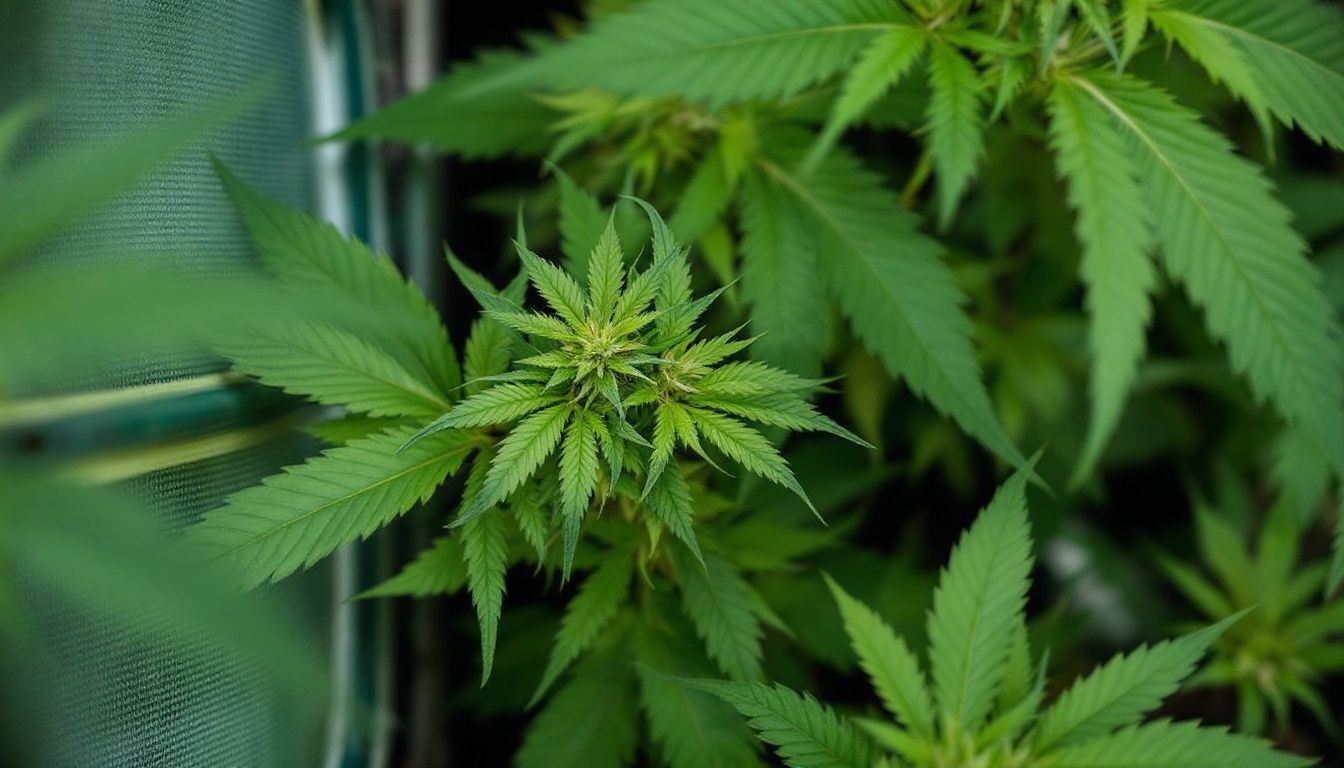
Understanding the legal framework surrounding growing marijuana is essential for home growers. Regulations vary significantly by state and locality, affecting how many plants you can grow and where they can be placed. Compliance with local medical marijuana laws helps avoid penalties and ensures a smooth growing experience.
Additionally, keeping cannabis plants out of public view and securing them properly are common legal requirements.
Local Medical Marijuana Laws
Local Medical Marijuana laws can impose additional restrictions on cannabis cultivation beyond state regulations. It’s essential to understand these local regulations, as they may be stricter and impact your ability to grow cannabis at home.
Consulting local authorities ensures compliance and helps avoid legal issues.
Plant Limits
Most states have specific regulations dictating the maximum number of cannabis plants a household can cultivate. For instance, California allows individuals over 21 to grow up to six cannabis plants at home. Colorado permits up to six plants per person, with only three flowering at any given time.
Knowing these limits helps you stay within legal boundaries.
Visibility and Security
Home cultivation laws often require cannabis plants to be kept out of public sight and secured in a locked, enclosed area at your primary residence, preventing unauthorized access and theft, ensuring both legal compliance and the safety of your marijuana at home.
Implementing these measures protects your investment and maintains a secure growing environment.
Daily Care and Maintenance
Daily care is vital for the health and productivity of cannabis plants. Monitoring water levels, adjusting nutrients, and checking for pests are crucial for maintaining optimal growth conditions. Consistent attention to these tasks ensures plants remain healthy and productive, leading to better yields and higher quality buds.
Watering and Feeding
Watering needs vary based on the plant’s growth stage, with young plants requiring less water than mature ones. Watering when the top inch of soil is dry, usually early in the morning or late in the evening, minimizes evaporation.
Using purified or rainwater and maintaining a pH level of around 6.5 is ideal for soil-grown plants. Calcium and magnesium are crucial during the flowering phase to support strong plants and heavy buds.
Pruning and Training
Regular pruning helps promote bushier growth, increasing yields. Techniques like topping and low-stress training enhance light exposure and air circulation around the plants. These methods encourage lateral growth, maximizing yield potential.
Different strains may respond uniquely to these techniques, so tailor your approach to each plant.
Pest Control
Regular inspections for pests and diseases prevent infestations from escalating. Organic pest control methods, such as using beneficial insects or natural repellents, can effectively manage pests without harmful chemicals. Utilizing natural predators like ladybugs is another effective strategy to keep pest populations in check.
Managing Growth Challenges
New weed growers often face challenges like mold, temperature fluctuations, humidity issues, and nutrient deficiencies. Regularly monitoring environmental conditions and proactive management maintain healthy plants.
Addressing these challenges effectively ensures successful cannabis cultivation and maximizes yield.
Preventing Mold and Root Rot
Preventing mold and root rot is essential for the health and yield of cannabis plants. Proper air circulation and soil drainage combat these issues.
Utilizing air filtration systems can also significantly reduce the risk of mold by capturing airborne contaminants.
Dealing with Temperature and Humidity
Cannabis plants have specific temperature needs during different growth stages. Maintaining appropriate humidity levels and ensuring good air circulation are crucial to prevent mold and root rot.
A hygrometer and thermometer help monitor and adjust these conditions effectively.
Recognizing Nutrient Deficiencies
Common nutrient deficiencies in cannabis plants include:
- Nitrogen
- Phosphorus
- Potassium
- Calcium
- Magnesium
- Iron
Early identification of these deficiencies helps maintain plant health and maximize yield.
For example, nitrogen deficiency is indicated by yellowing older leaves, while magnesium deficiency shows as interveinal chlorosis.
Harvesting and Curing
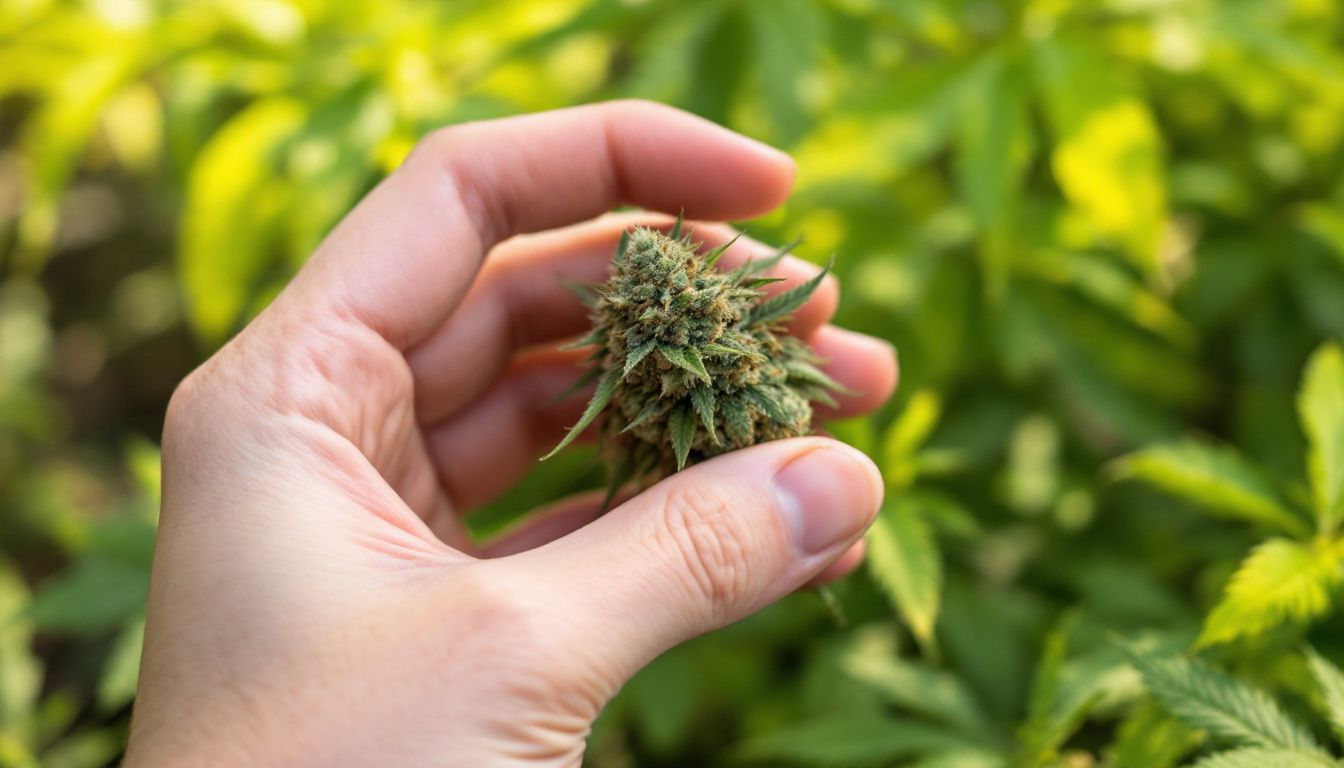
Proper harvesting and curing are essential for achieving the best quality and potency in your cannabis. Timing your harvest based on the color changes of pistils and trichomes ensures optimal results.
Curing enhances the flavor and potency of cannabis, making it an essential step in the cultivation process.
Determining Harvest Time
Key indicators for harvest readiness include changes in trichome color, with milky and some amber trichomes indicating peak potency. Additionally, when 70-90% of the hairs on the buds have darkened, it usually signifies high THC levels and readiness for harvest.
A magnifying tool to inspect trichomes provides a precise method for determining the right harvest time.
Harvesting Techniques
Careful cutting and trimming are essential to avoid damaging the plant and preserving the quality of the buds. Proper techniques ensure the harvested cannabis retains its potency and flavor, resulting in a more enjoyable final product.
Curing for Quality
Curing cannabis in airtight glass containers for two to three weeks enhances terpene profiles and overall flavor. This process also reduces harshness, improving the smoking experience.
Proper curing is essential for producing high-quality cannabis.
Safety Tips for Home Growers

When growing cannabis, it is crucial to consider the safety of your household, especially in preventing accidental poisoning for children and pets. Safety is paramount in home cannabis cultivation. Proper electrical setups, keeping pets safe, and preventing accidental consumption are essential. Adhering to these safety tips helps mitigate risks and ensures a secure growing environment.
Electrical and Fire Safety
Using power strips with built-in circuit breakers can prevent electrical overloads. Regular inspections of electrical cords and connections help prevent fires.
Avoid using extension cords for high-wattage equipment to reduce fire hazards.
Keeping Pets Safe
Certain cannabis plants can be toxic to pets, so it’s crucial to keep them in a separate, inaccessible area. THC can be harmful to animals, so ensure cannabis plants and products are kept well out of their reach.
Keeping pets safe from cannabis exposure is vital for responsible home cultivation.
Preventing Accidental Consumption
Preventing accidental consuming cannabis is essential, especially in households with children and visitors. Child-proof containers for cannabis storage and ensuring secure growing areas can prevent unintended access.
Regularly checking that all cannabis-related items are inaccessible helps maintain a safe environment.
Summary
Growing cannabis at home can be a rewarding and enriching experience if approached with the right knowledge and preparation. From understanding the plant’s life cycle and setting up an optimal grow space to navigating legal considerations and mastering daily care, each step is crucial for a successful harvest. By managing growth challenges and ensuring safety, home growers can enjoy high-quality cannabis products. Embark on your home cultivation journey with confidence, and reap the benefits of your hard work and dedication.
FAQs
How long should cannabis take to grow?
Cannabis typically takes about 3 to 5 months to grow, depending on the strain and growing conditions. The vegetative stage lasts 4-8 weeks, followed by a flowering period of 8-12 weeks. If you're cultivating cannabis for medical purposes, make sure you have a medical cannabis card to ensure you're compliant with local laws. Proper care during these stages will help achieve the best harvest.
Is cannabis easy to grow?
Cannabis can be relatively easy to grow with the right knowledge and equipment, but it requires attention to detail. For beginners, choosing the right strain and environment is crucial. If you're growing medical marijuana, understanding the specific needs of the plant, such as light, water, and nutrients, is essential. With proper care, even novice growers can achieve successful results.
How long do buds take to fully grow?
Buds typically take about 8 to 12 weeks to fully grow, depending on the strain and growing conditions. The flowering stage is crucial, and it can vary slightly between sativa and indica strains. If you're unsure about the best care, visiting medical dispensaries can provide helpful advice on how to nurture your buds for optimal growth. Patience and proper care lead to a successful harvest.
What is needed to start growing weed?
To start growing weed, you'll need a proper grow space, seeds or clones, light, water, and nutrients. It's also important to ensure you're familiar with the local medical marijuana laws to stay compliant. Depending on whether you're growing indoors or outdoors, you may need additional equipment like a grow tent or ventilation system. Proper research and preparation are key for success.
What are the stages of the cannabis plant life cycle?
The cannabis plant life cycle includes four main stages: germination, vegetative, flowering, and harvest. During the vegetative stage, the plant focuses on growth, while the flowering stage is when it starts producing buds. If you're growing medical cannabis, it's essential to monitor each stage closely to ensure optimal yields and potency. Proper care during each phase ensures a healthy plant and successful harvest.

